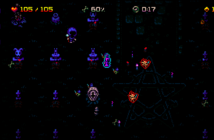

It’s impossible to deny that there is still some imbalance in the roles of both males and females in video games, or arguably multiple art mediums in general. However, this doesn’t mean that there hasn’t been change and improvement brought into the industry, with more options being provided for players of either gender.
As games continue to grow bigger in scale, greater possibilities and choices have been opened to players, some reflecting the increase of female gamers in the community. A number of games in the past lacked customization and gender options, such as the famous series of Pokémon games, which would not offer the option to play as a female character until the game “Pokémon Crystal” was released in 2001. The series did not offer full character customization until the games “Pokémon X” and “Pokémon Y” were released in 2013.
Many modern video games—especially open world action-adventure games and role-playing games such as “Sunset Overdrive,” “Fallout 4,” “Dragon Age” and recently “Fire Emblem”—have the player take the role of an avatar character. Players are able to choose their character’s gender and alter their appearance however they please. These kinds of options have offered gamers much more freedom than before, with male players not having to be forced to play as highly masculine characters, and female players can feel comfortable playing as characters that represent themselves rather than female characters who may be oversexualized and designed with a lot of exposed skin.
But does sexualization automatically tear value away from a character? Not necessarily, as popular video game characters such as Bayonetta from the critically acclaimed action games “Bayonetta” and “Bayonetta 2” have shown. While the female witch protagonist is sexualized a number of times in both games, her provocative behavior is part of her personality and acts more as a part of her own self-empowerment and parody than to be fanservice for male gamers. Bayonetta has received highly positive reception from gamers of both genders.
Additionally, female protagonists have received a lot more respect over the years. While many female protagonists have left a positive impact in the industry’s history, such as the bounty hunter Samus Aran of the “Metroid” series as well as Princess Zelda’s ambiguous persona Sheik from “The Legend of Zelda: Ocarina of Time,” others have had a more checkered past. These characters include Lara Croft of the “Tomb Raider” franchise, who is infamous for being overly sexualized while having little character development in earlier games in the franchise. She was finally given greater depth in more recent entries in the series. Furthermore, stronger female protagonists have become more common, such as Lightning from “Final Fantasy XIII,” Chell of the “Portal” series and the formerly mentioned Bayonetta.
Modern games have also continued pushing towards dual protagonists. One of the last console generation’s notable examples is “The Last of Us,” which features a middle-aged man named Joel and a young girl named Ellie, both fighting to survive in a post-apocalyptic world. Still, the developers of the game dealt with the undeniable sexism still lingering in the industry, as they were pushed to remove Ellie from the game’s front cover under the impression that women being on the cover of video games make them sell less, according to “The Escapist,” an online magazine covering video games as well as movies and comics.
Nevertheless, the gradual improvement of gender equality in video games has been a nice development to watch over the years. While there are still problems, both for the objectification of women or even the over-glorifying of macho-men to an uncomforting level, video games have grown to become an inviting and accessible medium for men and women alike.




